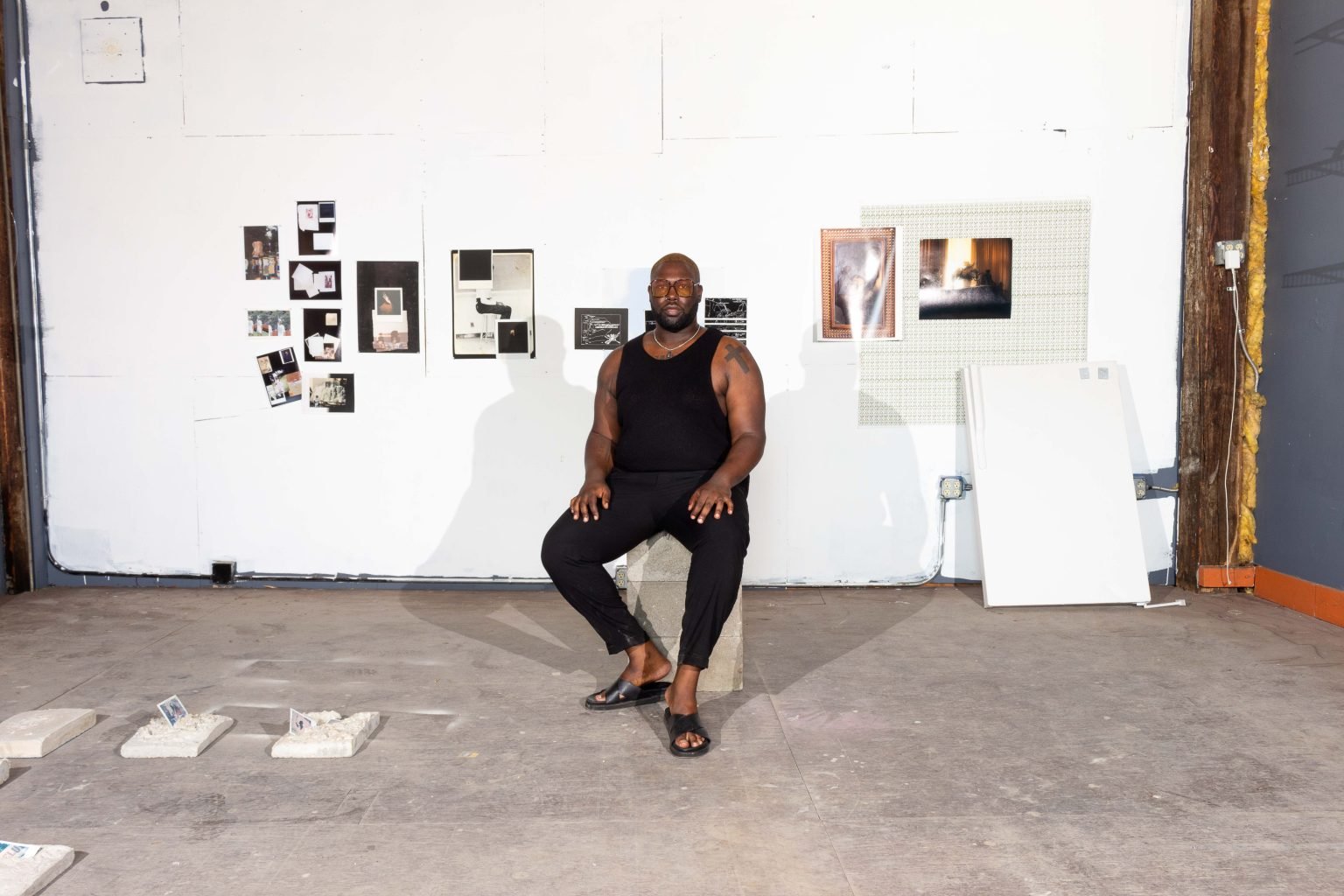On Collaborative Recomposition and Shabez Jamal As Archive
An interview for Sixty Inches From Center
June 2023
Excerpt (from the introduction):
”I know the exact moment when an artist’s work becomes part of my mental repository of practices that I will forever return to. When I’m looking at the work, my mind is rushed with a thousand thoughts, the most revealing ones being the essays I start writing or the projects I start curating in my head.
This is what happens when I see Shabez Jamal’s work. My most recent mental blooms were watered by the sculptures, Page Reconstructions and Untitled, from their solo show Close Your Eyes, And Remember at Sibyl Gallery in New Orleans. When I take up the artist’s invitation to close my eyes, projected on the backs of my eyelids I can clearly see Shabez’s sculptures and compositions sharing space with the drawings and prints of another artist in my mental repository of forever-references, Darrel Ellis. Together, their work would speak to one another in a language of kin, finding threads of lineage between and toward one another from the opposite ends of nearly four decades.
I would re-read archivist Steven G. Fullwood’s essay The Case of the Artist’s Archive from the book Darrel Ellis (published by Visual Aids), which speaks to subarchives, family photo albums, and how private family archives circulate and change when they enter the public realm. I would think of Shabez’s Page Reconstructions and concrete encasements when reading about how Ellis’ family archives made it so that “through his artistic explorations, [Ellis] and his father entered into a conversation beyond space and time.” I would think about Shabez, and also their second-self and keeper of the archives, Anita, when Fullwood writes, “consider for a moment another kind of archival experience: Darrel as archive, an embodiment of his ancestry and experience.”
I would begin conversations with Shabez about the future of their own public family archive, and how it and their work, as Fullwood writes, “warrant a place among a constellation of Black family archives in an institution where Blackness isn’t marginal, it’s the universe.”
These echoes, calls, and conversations only exist as future dreams, all sparked before, during, and after a conversation I had in early May with Shabez. We covered so much ground, including how they remain rooted in Missouri despite living in New Orleans, how ethics and integrity impact their use of archival materials, and the act of acknowledging their grandmother and extended family as co-authors of the work.”
___
Photo Credits:
[1] Shabez Jamal, Self-portrait in studio, 2023. A portrait of the artist in a studio space, surrounded by their artworks. Some photographic images hang just behind them with a refrigerator door propped up against the wall close by. At their feet and to the left are several concrete works from In Remembrance of Us. Image courtesy of Shabez Jamal.
[2] Shabez Jamal, Untitled (Page Reconstruction no. 85), 2023. In Untitled (Page Reconstruction no. 85), one large photograph of a person seated on a stool, seen from profile view. The photograph takes up the majority of the frame of the image. Covering the face and feet of the person in the image are two other Polaroids, one turned facedown, the other showing a spotlight on a person’s face as they turn away from the camera. Photo courtesy of Shabez Jamal.
[3] Shabez Jamal, Album Reconstruction No. 1, 2022. Oak, Acrylic Sheets, Polaroid Images, Chromogenic Prints and Bronze photo corners, 14” × 16 1/2” × 8”. A collage of Polaroid photographs is presented between two wooden boards. The photographs show a close up of a figure’s eyes, their legs, a side profile, and more. Image courtesy of Shabez Jamal.
[4] In this scanned self-portrait there is a Polaroid of Shabez Jamal in their studio, wearing all black and seated on a stack of concrete bricks. There are concrete artworks at their feet and in the background is a dark blue wall and shelves. The Polaroid is scanned and placed within the center of the image, floating against a dark black, textured background. Photo by Shabez Jamal.




